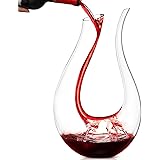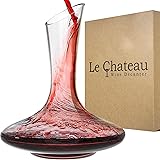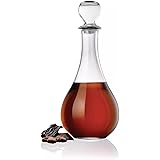The world of wine is vast and varied, encompassing everything from the casual sipper to the connoisseur seeking unparalleled depth. As explored in the compelling discussion above, there exists a niche within viticulture that defies conventional logic, where grapes appear to defy gravity and thrive amidst nature’s harshest challenges. This realm is known as heroic viticulture, a testament to human resilience, ancient traditions, and the vine’s indomitable spirit.
In a landscape dominated by efficiency and mechanization, the concept of heroic viticulture presents a profound paradox. Imagine vineyards clinging precariously to sheer cliffs, or flourishing on the flanks of active volcanoes. Such extreme conditions would render modern farming techniques impossible, yet these very environments yield wines of extraordinary character. The struggle for existence, it seems, imbues these grapes with a unique essence, translating into unparalleled complexity in the bottle.
Uncorking Heroic Viticulture: Defining the Extreme
What precisely elevates a vineyard to the heroic status? It is not merely a subjective assessment of difficulty; rather, there are official, technical criteria established by Cervim (Center for Research, Study, Safeguarding, Coordination, and Valorization of Mountain Viticulture). This esteemed organization sets the parameters that delineate truly heroic vineyards, recognizing them as invaluable cultural patrimony. A vineyard needs only to meet one of these four stringent conditions to earn its badge of honor:
1. Extreme Slopes: Where Gravity is a Constant Battle
Perhaps the most visually striking criterion, an inclination greater than 30% immediately signals a heroic site. At this gradient, heavy machinery becomes inefficient, often dangerous, forcing viticulturists to rely almost entirely on manual labor. The Douro Valley in Portugal exemplifies this, where some slopes can reach a staggering 70%. Here, imagine vintners effectively climbing to tend and harvest their vines, a stark contrast to the easy rows of mechanized vineyards.
2. High Altitude: The Thin Air of Terroir
Vineyards situated above 500 meters (approximately 1,640 feet) are also classified as heroic. This elevation dramatically alters the growing conditions, primarily by fostering slower, more gradual ripening processes. The cooler temperatures at altitude extend the growing season, allowing grapes to develop complex flavor precursors and aromatic compounds over a longer period, resulting in wines with enhanced aromatic purity and structural finesse.
3. Terraces and Socalcos: Engineering the Land by Hand
The presence of steep, hand-built terraces, often ancient structures known as ‘socalcos’ in Portugal or ‘murétia a seco’ (dry stone walls) in Italy’s Cinqueterre, is a definitive mark of heroic viticulture. These architectural marvels are not merely aesthetic; they are critical for preventing erosion on steep hillsides and maximizing arable land. Their construction and relentless maintenance demand backbreaking manual labor, preserving both the land and age-old viticultural traditions.
4. Isolated Islands: The Challenge of Remoteness
The fourth criterion recognizes vineyards in small, often remote islands, such as Pantelleria off Sicily or the Canary Islands. In these locations, the primary challenge shifts from gradient to logistics. The sheer difficulty of transporting supplies to these isolated pockets and, crucially, getting the finished wine out, creates a significant operational hurdle. This remoteness fosters unique viticultural practices and often safeguards rare autochthonous grape varieties.
The Human Cost: Labor and Dedication in Heroic Viticulture
The immense effort required for heroic viticulture cannot be overstated. Consider the staggering statistics: these extreme areas can demand up to 1,500 hours of labor per hectare each year. Contrast this with conventional, flat, and mechanized vineyards, which typically require around 200 hours per hectare. This eightfold increase in manual intervention translates directly into production costs that can be 10, or even 20 times higher than average. When a bottle of heroic wine is purchased, one is truly investing in an unparalleled level of human dedication and the preservation of a unique agricultural heritage.
The Terroir’s Influence: How Struggle Shapes Flavor
The environmental stress inherent in heroic viticulture is not merely an obstacle; it is a catalyst for exceptional quality. The vine’s struggle for survival actively contributes to the profound character found in these wines. Several key physiological and geological factors are at play:
Deep Root Systems and Mineral Essence
On steep slopes and in nutrient-poor soils, vines are compelled to grow deep, vigorous root systems. This is partly for anchorage, preventing the vine from sliding down the hillside. More importantly, these extensive roots delve deep into the subsoil, searching for scarce water and nutrients. This deep exploration often results in a distinct mineral essence being imparted to the wine, a direct reflection of the underlying geology.
The Mother Rock: Schist, Slate, and Volcanic Signatures
The geology of these extreme sites plays an outsized role. Schist, such as that found in the Douro or Priorat, is a dark metamorphic rock that absorbs solar heat during the day and slowly radiates it at night. This ‘radiator effect’ aids in optimal grape ripening, particularly in regions with significant temperature fluctuations. Conversely, volcanic soils, prevalent in areas like Etna, lend unique notes of ash, iron, sometimes even struck flint or gunpowder, often accompanied by a vibrant, linear acidity.
UV Radiation and Enhanced Pigmentation
Higher altitudes expose vines to more intense UV radiation. To protect themselves, vines produce increased concentrations of protective compounds, notably anthocyanins (color pigments in red wines) and terpenes or pyrazines (key aroma compounds). This translates visually into deep, sometimes almost inky colors in red wines, and aromatically into sharper, purer fruit notes and distinct varietal expressions, such as the vibrant freshness of Mencía from Ribera Sacra.
Thermal Amplitude: The Key to Elegance and Longevity
The diurnal temperature variation, or thermal amplitude—the significant swing between hot days and cool nights—is absolutely critical in heroic viticulture. Hot, sunny days facilitate sugar accumulation in the grapes. However, the dramatic drop in temperature at night effectively ‘slams the brakes’ on the vine’s metabolism. This crucial slowdown prevents the burning off of natural acids (tartaric and malic), thereby preserving the essential freshness and vibrancy that defines these wines. This sustained acidity provides the backbone for age-worthiness, allowing powerful, concentrated wines to remain balanced and elegant, rather than becoming “flabby” or ponderous.
Autochthonous Grapes: A Living Genetic Library
Many heroic regions champion autochthonous grape varieties, those native to the specific terroir. These varieties have evolved over centuries, perfectly adapting to the tough local conditions. Imagine Prié Blanc in Valle D’Aosta, often grown pié franco (on its own roots, pre-phylloxera, non-grafted). These vines are living pieces of history, genetically adapted to their environment and representing an irreplaceable genetic library for future viticulture.
A Sensory Tour: Regional Expressions of Heroic Viticulture
To truly appreciate heroic viticulture, one must embark on a sensory journey through some of its most iconic regions:
- Valtellina, Lombardy, Italy: Nebbiolo, grown on impossibly steep terraced slopes, yields high-structure wines with potent yet fine tannins. The region also produces Sforzato, a Passito style from dried grapes, known for its intense concentration and ageability.
- Etna, Sicily, Italy: The volcanic soils of Etna produce reds primarily from Nerello Mascalese, often compared to Pinot Noir or Nebbiolo for its structure and perfume, but with unmistakable notes of burnt earth, smoke, and iron. Whites from Carricante offer citrus, anise, and a characteristic high acidity.
- Cinqueterre, Liguria, Italy: These iconic coastal terraces, tumbling to the sea, are famous for Sciacchetrà, a sweet Passito wine. It exhibits notes of honey, saffron, and apricot, punctuated by a striking salinity derived from the pervasive sea spray.
- Douro Valley, Portugal: A poster child for heroic viticulture, the Douro’s 70% slate slopes (socalcos) are legendary. While renowned for Port wine, the dry red table wines are equally impressive: robust, concentrated, with dark fruit, graphite, wild herbs, and a firm structure built to last.
- Ribera Sacra, Galicia, Spain: Equally dramatic, these sheer slate slopes plunging down to the River Sil are home to the Mencía grape. The reds are typically lighter-bodied than Douro wines, yet possess vibrant acidity, fresh red fruit (cranberry, sour cherry), and sometimes floral notes, offering immense energy. Godello whites are mineral-driven with green apple and fennel hints.
- Canary Islands, Spain: The ultimate combination of extremes, these volcanic, maritime islands feature old vines and constant Atlantic winds. The wines are celebrated for accentuated salinity (even more pronounced than Cinqueterre), and unique volcanic mineral notes of ash, iron, and flint—a true taste of a remote, wind-battered, volcanic place.
The Sensory Profile of Heroic Wines: Clues in the Glass
When encountering a heroic wine, particularly in a blind tasting, several clues can reveal its unique origins:
- Visual Concentration: The high concentration of anthocyanins, a result of intense UV exposure at altitude, often leads to deep, sometimes almost opaque colors in red wines, signaling profound concentration.
- Viscosity: Thick, slow-moving ‘legs’ or ‘tears’ clinging to the glass suggest high levels of dry extract or potentially elevated alcohol, both indicative of intense concentration achieved through extreme conditions or dried grapes (e.g., Sforzato, Sciacchetrà).
- Minerality: Beyond fruit, look for non-fruit notes that speak of the earth itself: smashed rocks, wet slate, graphite, or in volcanic wines, gunpowder, struck match, or ash. This is the authentic flavor of geology.
- Salinity: Especially in island or coastal wines, a distinct salty tang can be perceived, particularly on the finish. This ‘lick of sea spray’ provides a refreshing, tonic quality, balancing richness or alcohol.
- Vibrant Acidity: The preserved acidity from dramatic day-night temperature swings manifests as an ‘electric energy’ and freshness on the palate, making the wines incredibly food-friendly and ensuring their aging potential.
- Polished Tannins: Despite the ‘stressed’ environment, the long, slow ripening period (especially at altitude) allows tannins to fully ripen and polymerize into smoother, longer chains. This results in abundant, firm tannins that provide structure without harshness, feeling fine-grained and polished rather than rough or green.
Pairing Heroic Wines with Gastronomy: Principles of Harmony
The complexity and intensity of heroic wines demand thoughtful food pairings. Several principles guide the selection, ensuring that both wine and food elevate each other:
- Think Local (Kilometro Zero): The golden rule is to pair the wine with traditional local dishes that have evolved alongside it for centuries. Imagine a robust Douro red alongside slow-cooked cabrito (young goat); the wine’s firm tannins beautifully cut through the richness of the meat.
- Acidity Versus Fat: The bright, high acidity preserved in heroic wines acts as an excellent palate cleanser. A high-acid white from altitude, such as Prié Blanc, can cut through rich, fatty dishes like alpine cheese fondue or pasta with a heavy cream sauce, refreshing the palate with each sip.
- Tannin Versus Protein: For structured red heroic wines, protein molecules in food (especially red meats) bind with wine tannins, softening the wine’s astringency and allowing its fruit and complex mineral notes to shine. Roasted red meats, grilled game like venison, or hard aged cheeses such as Parmigiano Reggiano are ideal companions for wines from Valtellina or the Douro.
- Sweet Wines: Contrast or Similarity: For heroic sweet wines (Passitos like Sciacchetrà), pairing can involve contrast (e.g., a salty, pungent blue cheese like Roquefort against intense sweetness and acidity) or similarity (matching the wine’s notes of dried fruits, honey, and nuts with desserts featuring these elements, like almond biscotti or panettone). The inherent high acidity in these sweet wines prevents them from being cloying, maintaining freshness.
Challenges and the Future of Heroic Viticulture
The future of heroic viticulture is shadowed by a profound paradox, particularly in the face of global climate change. While altitude provides a vital cool refuge against rising temperatures, helping to preserve acidity, climate instability introduces immense new threats:
- Torrential Rains: Increased intensity of rainfall poses a catastrophic risk to the stability of ancient, hand-built stone terraces on steep slopes. Erosion, landslides, and the potential obliteration of entire vineyard plots are constant dangers.
- Drought: Conversely, longer and more severe droughts are forcing producers, even in traditionally dry-farmed regions like the Douro, to consider irrigation. This shift fundamentally alters vine physiology and wine style, raising critical questions about water sustainability in already stressed regions.
- Technological Adoption: Tools like drones for surveying inaccessible slopes or soil humidity sensors for precise water management are desperately needed. However, the cost of implementing such advanced technology often remains prohibitive for the small, family-run enterprises that characterize heroic viticulture.
This brings into sharp focus the crucial role of the consumer. Choosing a bottle of heroic wine is far more than a simple purchase; it is an ethical and cultural vote. It represents support for a fair return on the winemakers’ incredibly hard work, helping to preserve unique landscapes—many of which are UNESCO World Heritage sites like the Alto Douro. Moreover, it ensures the survival of ancient, rare, and autochthonous grape varieties, protecting a living genetic library essential for the future of global viticulture. These vineyards, with their irreplaceable genetic heritage, could perhaps be viewed as essential global agricultural treasures, akin to the Svalbard Global Seed Vault, but living, dynamic, and producing.







